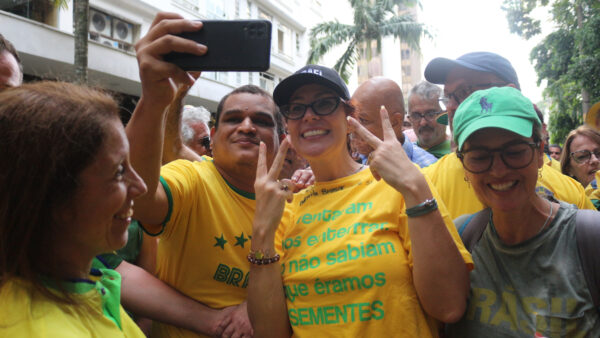Today, July 9, is traditionally a public holiday in the state of São Paulo, commemorating the 1932 Constitutionalist Revolution, eventually quelled by President Getúlio Vargas. However, São Paulo’s history of battles and skirmishes goes beyond 1932. One particular uprising, that of 1924, has largely flown under the radar in the state’s history.
Cannons, trenches, bombings, roughly 5,000 injured and hundreds of deaths — not a scenario one would usually associate with Brazil. This was the setting for an entire month in São Paulo in the 1920s, as the country’s most important economic center saw itself caught up in a military uprising as social changes brought the region to boiling point. With time, the damages were covered up and along with them the story of the worst conflict in Latin America’s biggest city.
“Oh well, that’s because of a curse. It’s the revolution doomed to be forgotten for 100 years,” jokes Celso Luiz Pinho, author of ‘São Paulo – 1924,’ a book about the uprising of rebellious army members that tore the city apart for almost a month in July of 1924. While the grim forecast of an army commander passed on to Mr. Pinho is now an anecdote, it actually remains accurate. While the 1932 uprising is celebrated with the highest monument in the city — an obelisk built to hold the remains of fallen soldiers — and a public holiday, the events of 1924 are barely discussed by Brazilian historians, not to mention the population.
For Ilka Stern Cohen, author of ‘Bombas sobre São Paulo – A revolução de 2014,’ “memory is made out of choices that make sense or not. The events of 1924 do not make sense to São Paulo’s narratives. It all happened in the city by chance, local politicians were not involved. Of course it was important, it changed the lives of those who were besieged for more than 20 days, but it disappeared because it does not serve any interest,” she told The Brazilian Report.
Though it seems lost in time, this failed coup actually sheds light on ever-present questions in Brazilians politics: the need for social reforms and the involvement of the army in everyday politics.
A powder keg in São Paulo
While the uprising itself started on July 5, its causes go far back. The 1920s were a period of social change in Brazil, with the first steps of urbanization and industrialization taking place in its coastal cities. Amid the changes, the political system known in Brazil as “the Old Republic” — marred by rigged elections, low public participation in politics, and a rotation of rural elites in power — slowly started to crack.
One of these cracks showed up in the armed forces, in a movement referred to by the textbooks as tenentismo, or Lieutenantism. The lower ranks of the Army — an institution seen as almost unbreakable in modern-day Brazil — were keen on social changes. “I explain 1924 as an attempt to re-establish the ideals of the 1889 Republic. It is a moment when the political model is questioned”, says Ms. Stern Cohen.
Two years before, 18 soldiers had shown their dissatisfaction in Rio de Janeiro, when they tried to take over the Copacabana Fort, being besieged by the federal government forces and dying on the beach.
As an attempt to dissipate the movement, explains Mr. Pinho, some of those involved were deployed to far-away provinces, such as Mato Grosso do Sul and the countryside of São Paulo. Indeed, they were far from the federal capital of Rio de Janeiro, but not from each other. There, they were able to spread their ideas and gather support. Unaware of the situation, the city of São Paulo lay in between the rebels and their goal: to overthrow then-president Artur Bernardes in Rio de Janeiro.
The heat of the battle
The uprising began on the second anniversary of the attempted coup in Copacabana. The rebels, commanded by general Isidoro Dias Lopes, took over the 4th Cavalry Battalion in Santana, to the north of São Paulo, as reported by newspaper O Estado de S.Paulo. From there, they took the military airport of Campo de Marte and bombed the official government palace, which was located in São Paulo’s city center.
The conflict was brutal, with the rebels firing cannons and being targeted by aerial bombing in response. Trenches were dug all over town. Civilian areas such as the working-class neighborhoods of Mooca and Brás were targeted; the Liceu Coração de Jesus school, which was close to the palace, was hit by three bombs.
“[Federal government forces] bombed São Paulo and whether due to lack of technical knowledge or by a will to end the confrontation as soon as possible, they were not very fond of buildings, houses. There was broad destruction”, said historian Boris Fausto, in the Netflix documentary series Guerras do Brasil.
A quick fight was also the goal of the rebels, says Mr. Pinho. “They wanted a blitz. In little time, they occupied strategic spots, but did not have outside support. It was easy to see, after 20 days, that it wouldn’t work. Planning is beautiful on paper, but when it came to reality, they were not prepared.”
In her book, Ms. Stern Cohen explains some episodes of misfortune and bad planning that worked against the rebels, such as an informant that tipped off military commanders loyal to the government, who managed to organize a resistance and arrest some of the main leaders of the rebellion: brothers Joaquim and Juarez Távora.
But dragging the conflict on for so long took a heavy toll on civilians. Caught up in the conflict, they couldn’t tell rebels from loyalists, as both wore the same uniforms. Amid the besieged state, thousands fled to the countryside and the city’s supply chain largely dried up. Left to their own devices, the population tried to organize the city and mediate the conflict. But those efforts were not enough to avoid massive losses. Sources diverge in terms of deaths; official counts speak of 503 casualties, but historians put that number closer to 800. Regardless, the uprising of 1924 remains, to this day, the biggest armed conflict in the city of São Paulo’s history.
A symptom, not the cause
The rebellion itself did not have popular support in the streets, as Ms. Stern recalls, but the causes supported by the rebels were not strange to Brazilians. “It happened at a time of overall dissatisfaction. You had strikes, police repression … There was no one in the streets, but you can tell, by looking at the newspaper editorials, that there was some sort of sympathy [toward the uprising] as they were pointing to a new direction for the country,” she said.
The lieutenants did not know, but while they fled to the countryside after losing the unplanned battle for São Paulo, military uprisings in their support took place in Amazonas, Mato Grosso, and Sergipe, according to Fundação Getúlio Vargas.
Even though their claims were vague — and included ousting an elected president by the threat of violence — other demands made by the uprising find echoes in modern Brazil, such as improved education, cutting illiteracy, fair elections, and an end to corruption. Mr. Pinho recalls that, in the end, lieutenants were no longer a rank in the military, it was a name for all of those who supported their cause, whether they were members of the military or not.[/restricted]










 Search
Search






































